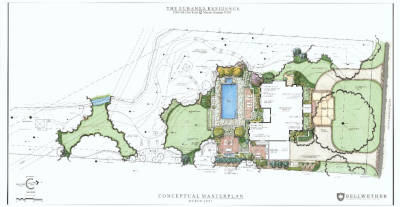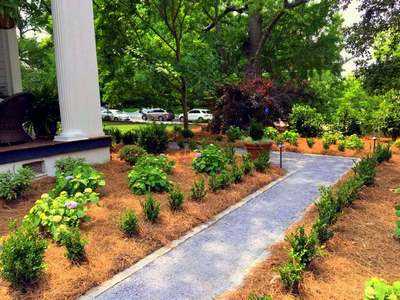This checklist will help you get a good start on a new season
A new growing season is under way. Are you ready? Here’s a to-do list to get you started:
- Pull those weeds. Whether you’re seeing left-over weeds from last year or new ones that sprouted in cool weather, eliminate them now when the ground’s still soft from winter. They’ll come out easier than in hard, dry summer soil. Especially remove them before they have a chance to grow and deeply root, and especially pull them before they have a chance to go to seed.
- Prune the summer-blooming flowering shrubs. End of winter to early spring is prime time to prune shrubs that flower from late June through fall. This includes abelia, butterfly bush, beautyberry, caryopteris, clethra (summersweet), smooth hydrangea, panicle hydrangea, rose-of-sharon, St. Johnswort, crape myrtle, summer-blooming spirea and vitex. All of these bloom on wood that grows in the current season, so there’s no danger of cutting off flower buds that formed last year. Wait until right after flowering to prune spring-blooming shrubs, such as azalea, rhododendron, weigela, lilac, forsythia and viburnum.
- Fertilize the beds. Once the ground thaws, apply granular fertilizer around the trees, shrubs and perennials. Match the particular product to the plant type and to any particular nutrient needs spelled out by a soil test.
- Inspect trees and shrubs for winter damage. Prune off any broken, dead or storm-damaged branches. Also snip the tips off of any evergreens that have suffered tip diebacks from winter’s cold.
- Get rid of dead perennial leaves. If you didn’t already cut back your frost-killed perennial flowers last fall, rake or clip off that browned foliage now. It’ll clear the way for this year’s new growth, which will be pushing up shortly. If you notice that any perennials have worked their way partly out of the ground due to winter freezing and thawing, tamp them back down so the roots aren’t exposed. Water them and add an inch or two of mulch around them.
- Divide perennials. Right before new growth begins is an ideal time to dig and divide most perennial flowers that are growing beyond where you’d like them. Replant divided clumps ASAP, and water them well in their new home. Or give away pieces or compost any excess. The exception is early-season perennials that already are blooming – or that are in bud and ready to bloom soon. These are best divided after bloom or in early fall.
- Rake matted leaves. Leaves that have blown under and around trees, shrubs and perennials can be left in place and mulched over, assuming they’re in modest quantities. No need to remove those. However, matted leaves should be raked or blown off of the lawn and out of evergreen groundcover beds so these green plants can take in sunlight. Patch any bare spots in the lawn with one of three different GreenView Grass Seed mixes.
- Remove winter protection. As the threat of frost wanes, remove burlap barriers, wraps and other protective material from around landscape plants that needed the extra winter protection. Also remove any staking from new trees if they’ve been in the ground for more than a year.
- Problem prevention. Apply GreenView Crabgrass Control Plus Lawn Food on the lawn (if you’ve had a crabgrass problem in the past) and a granular weed preventer such as Preen® Garden Weed Preventer on the garden beds. A good cue for the former is when the dandelions are blooming, and a good cue for the latter is when forsythia bushes are in full bloom. GreenView Fairway Formula Spring Fertilizer Weed and Feed and Crabgrass Preventer is a great option to kill existing weeds in the lawn, fertilize it, and prevent new weeds all in one easy application.
- Edge beds. Whether you use a long-handled, people-powered edging tool or power edger, end of winter is a good time to cut sharp edges along all garden beds. This not only neatens the landscape, it creates a “lip” to contain mulch that can be applied once the soil warms consistently for the season.





